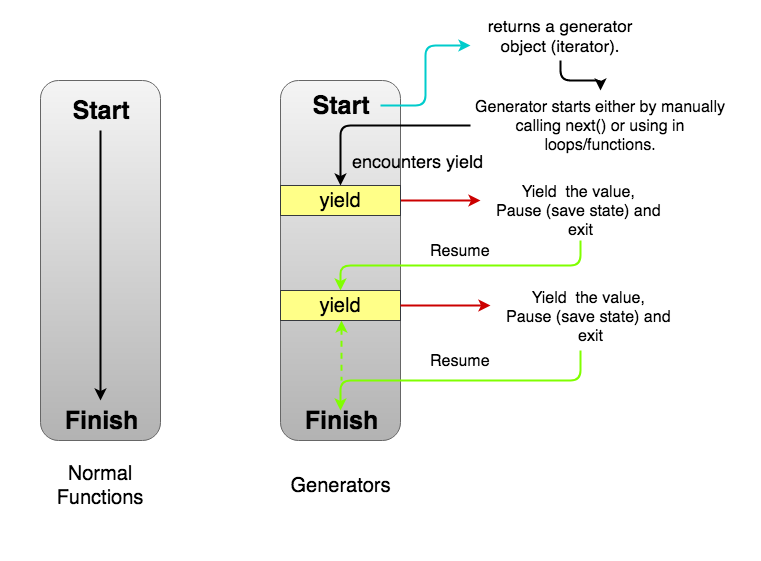Functions
Functions in js are values or First Class Function. That means it can be asigned to a variable or passed as parameter.
Function hoisting only works with function declaration and not with function expression.
Every function creates a new execution context and then it executes the code line by line. After the execution finished, this execution context is poped up from the execution stack
Function scope
Variables defined inside a function cannot be accessed from anywhere outside the function, because the variable is defined only in the scope of the function. However, a function can access all variables and functions defined inside the scope in which it is defined. In other words, a function defined in the global scope can access all variables defined in the global scope. A function defined inside another function can also access all variables defined in its parent function and any other variable to which the parent function has access.
In JavaScript a function can be declared using several ways:
1. Function declaration
A function declaration is made of function keyword, followed by an obligatory function name, a list of parameters in a pair of parenthesis (para1, ..., paramN) and a pair of curly braces {...} that delimits the body code
It is easy to confuse the function declaration and function expression. They look very similar, but produce functions with different properties.
An easy to remember rule: the function declaration in a statement always starts with the keyword function. Otherwise it's a function expression
Some JavaScript environments can throw a reference error when invoking a function whose declaration appears within blocks {...} of if, for or while statements.
2. Function expression
Expression: is a unit of code that results in a value. It doesn't have to save to a variable.
The function expression creates a function object that can be used in different situations:
Assigned to a variable as an object count = function(...) {...} Create a method on an object sum: function() {...} Use the function as a callback .reduce(function(...) {...})
3. Shorthand method definition
Shorthand method definition can be used in a method declaration on object literals and ES6 classes. You can define them using a function name, followed by a list of parameters in a pair of parenthesis (para1, ..., paramN) and a pair of curly braces { ... } that delimits the body statements.
4. Arrow function
The function declared using a fat arrow has the following properties:
The arrow function does not create its own execution context, but takes it lexically (contrary to function expression or function declaration, which create own this depending on invocation).
The arrow function is anonymous: name is an empty string (contrary to function declaration which have a name) arguments object is not available in the arrow function (contrary to other declaration types that provide arguments object).
5. Generator function
6. Function constructor
Closure
In functional programming, closures are frequently used for partial application & currying. This requires some definitions:
Application: The process of applying a function to its arguments in order to produce a return value.
Partial Application: The process of applying a function to some of its arguments. The partially applied function gets returned for later use. In other words, a function that takes a function with multiple parameters and returns a function with fewer parameters. Partial application fixes (partially applies the function to) one or more arguments inside the returned function, and the returned function takes the remaining parameters as arguments in order to complete the function application.
// partialApply(targetFunction: Function, ...fixedArgs: Any[]) =>
// functionWithFewerParams(...remainingArgs: Any[])
const partialApply = (fn, ...fixedArgs) => {
return function (...remainingArgs) {
return fn.apply(this, fixedArgs.concat(remainingArgs));
};
};
Function composition
Function composition is the process of combining two or more functions to produce a new function. Composing functions together is like snapping together a series of pipes for our data to flow through.
const pipe = (...fns) => x => fns.reduce((v, f) => f(v), x);
const fn1 = s => s.toLowerCase();
const fn2 = s => s.split('').reverse().join('');
const fn3 = s => s + '!'
const newFunc = pipe(fn1, fn2, fn3);
const result = newFunc('Time'); // emit!
Generators function
What are Generators?
A normal function such as this one cannot be stopped before it finishes its task i.e its last line is executed. It follows something called run-to-completion model.
The only way to exit the normalFunc is by returning from it, or throwing an error. If you call the function again, it will begin the execution from the top again.
In contrast, a generator is a function that can stop midway and then continue from where it stopped.
Here are some other common definitions of generators —
Generators are a special class of functions that simplify the task of writing iterators.
A generator is a function that produces a sequence of results instead of a single value, i.e you generate a series of values.
In JavaScript, a generator is a function which returns an object on which you can call next(). Every invocation of next() will return an object of shape —
{
value: Any,
done: true|false
}
The value property will contain the value. The done property is either true or false. When the done becomes true, the generator stops and won’t generate any more values.
